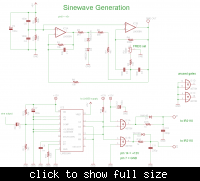IW2FVO
Newbie level 4
Brian,
I did read with a lot of interest those posts.
I think you can give me some directions to build an home made PV battery charger using the MPPT function.
There is a lot of " words " on the web but I can not find a complete system.
I saw Microchip project in the relevant application note but the schematics diagram drawing has some missing connection.
My system will charge a 12 Vdc lead acid battery an the pv is about 100 w.
Thanks for any help
Regards,
Ambrogio
IW2FVO
North Italy
I did read with a lot of interest those posts.
I think you can give me some directions to build an home made PV battery charger using the MPPT function.
There is a lot of " words " on the web but I can not find a complete system.
I saw Microchip project in the relevant application note but the schematics diagram drawing has some missing connection.
My system will charge a 12 Vdc lead acid battery an the pv is about 100 w.
Thanks for any help
Regards,
Ambrogio
IW2FVO
North Italy
I would suggest you visit the Microchip web site, most PIC devices have PWM generators in them as standard. I think my first choice would be the PIC18F1320 because it is very low cost and already has a four-phase PWM generator built in to it. This means you can produce the drive signal to all the FETs (using IR2110 to shift the voltage levels) directly by setting some values in PIC registers. It will allow you to produce any on/off ratio between 0% and 100%, all you have to do is produce the sine wave in software or use a look-up table of sine levels then send them to the PWM register in time to modulate at the right frequency. The PIC also has several ADC channels which you can use to stabilize the output or monitor the load.
The data sheet and free assembler are at Microchip Technology Inc. is a Leading Provider of Microcontroller and Analog Semiconductors, providing low-risk product development, lower total system cost and faster time to market for thousands of diverse customer applications worldwide. where you will also find trial versions of 'C' compilers which should be adequate to complete this task without having to buy a full version.
Incidentally, I am using a similar PIC to generate speech using PWM so low frequency power AC signals should be no problem!
Brian.
